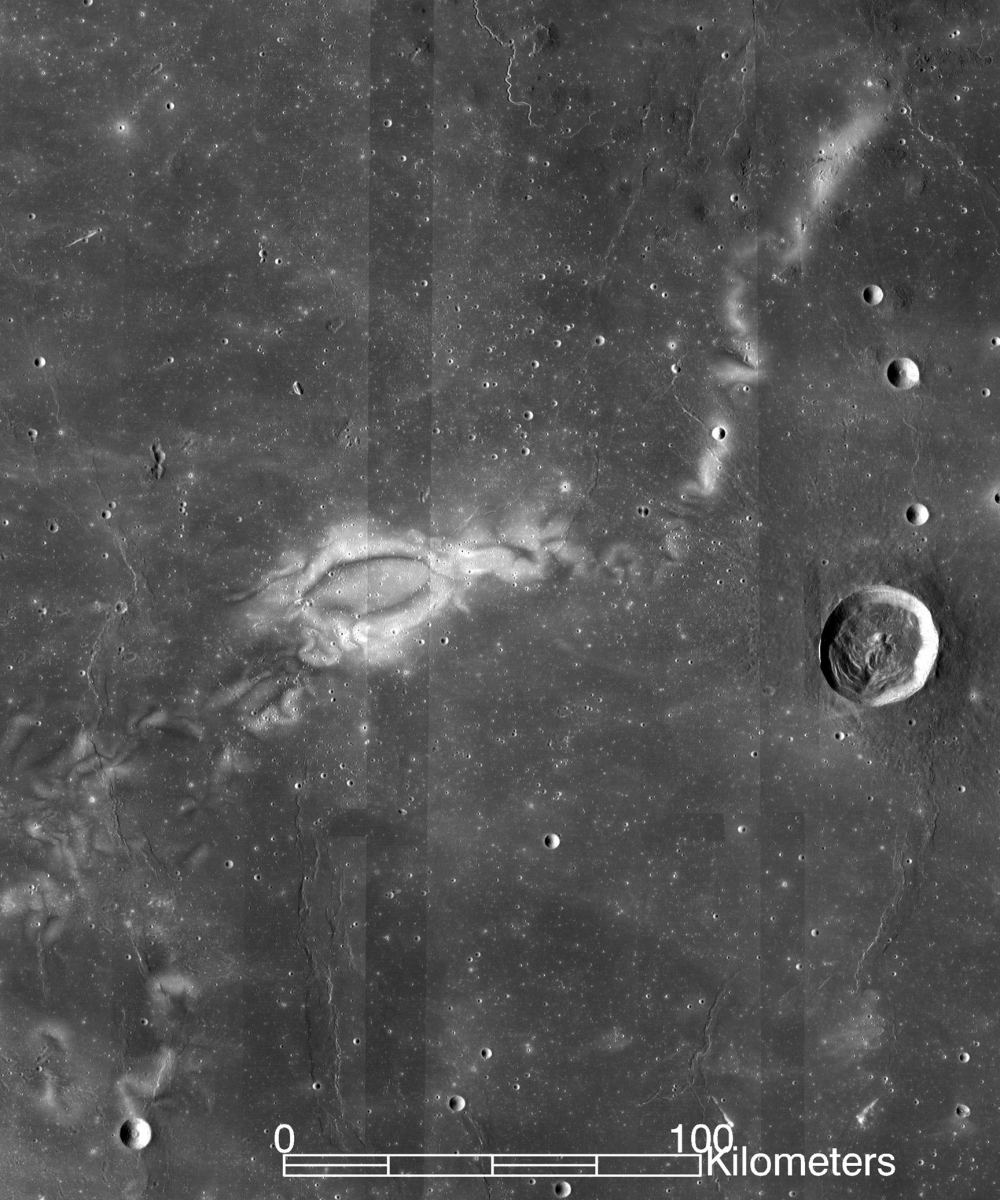For years, people noticed strange features on the Moon dubbed “Lunar Swirls.” They’re bright regions that appear to be concentrations of lighter-colored material on the surface. It turns out that interactions between the solar wind and magnetic regions on the Moon may play a role at two sites.
Scientists long thought that these swirls weren’t related to the surrounding topography, but it turns out there’s some kind of interaction going on between the swirl deposition and the surface. Planetary Science Institute senior scientist John Weirich led a team to study topographic data for lunar swirls at high resolution. They found a correlation between the swirl areas and lower topography in a region called the Reiner Gamma swirl.
About Swirl Regions
The Moon has a number of similar regions with high-contrast bright markings that appear to loop across the surface. Generally, they look like wide bright swirls separated by darker off-swirl lanes. The fact that they exist spurs questions about how they form and there isn’t a clear answer, yet. Once that mystery is solved, scientists will have a better understanding of how the lunar surface is affected by the solar wind, bombardment by micrometeorites, how the lunar soil “migrates”, and what other effects the local environment has on the surface.

“Lunar swirls have piqued scientists’ interest since they were discovered, partly because the scientific community doesn’t completely understand how they formed. There are many hypotheses about their formation process. Each hypothesis has observations that support it, but there are also other observations that contradict them,” Weirich said. “Since we don’t have a full understanding of how these swirls formed, we don’t completely understand the story they can tell us about the Moon. Forming them could involve a combination of well-understood processes interacting together or a currently unknown process. Unusual objects or phenomena are sometimes the key to obtaining deeper knowledge, and for this reason, lunar swirls are very intriguing. And the fact that they look really cool.”
Studying Swirls in Higher Detail
To do their work, Weirich’s team looked at earlier research showing that bright areas are 2-3 meters lower than dark areas, particularly in the Mare Ingenii lunar swirl. “However, it is not as simple as the bright areas are uniformly lower than the dark areas. If that was the case this relationship between topography and swirl would be easy to demonstrate by comparing an elevation map to a picture of the swirl. Instead, this relationship is only seen when we compare the average height of the bright areas and the average height of the dark areas.”
Weirich studied Lunar Reconnaissance Orbiter mission images and applied a special software suite to determine the surface topography. The team also used machine-learning tools on specific images. It classified the swirls into various units: bright areas (on-swirl)and dark areas (or “off-swirl”). The studies allowed them to identify transition regions between the two units, and they labeled those “diffuse-swirl”.
The correlation between topography and swirl formation still doesn’t explain exactly why they form. But, it does give planetary scientists some new clues as they study other swirl features on the Moon. At present, there are several theories about formation, but none of them explain all of the details. One idea is that they formed as a result of cometary impacts. That explains the brightness of these features. Another theory is that the swirls form when weak magnetic fields protect lighter-colored lunar surface soil (regolith) from the solar wind. Finally, weak electric fields created by brief interactions between the magnetic anomalies and solar wind plasma could play a role. Those fields could affect electrically charged fine dust on the surface. How topography plays into any of these theories is still an unknown.
How They Did It
The specialized software the team used does stereophotoclinometry to analyze the topography of a surface. It combines stereo imaging and photoclinometry to get the surface height of a region. The swirl units of interest were defined by machine learning procedures. The team then compared that information to the SPC-derived topography. That allowed them to statistically determine if height correlations existed and what differences they showed.
The SPC methodology has been used on various surfaces, including using data from the OSIRIS-REx mission, among other missions. Planetary scientists use SPC methodologies to describe the shapes of planets, asteroids, comets, and other small bodies. Still, there’s not yet a definite explanation for these swirls. However, the combo of high-resolution imaging, machine learning, and advanced software techniques gives planetary scientists more insight into their still-mysterious origins.

